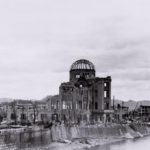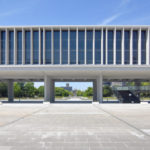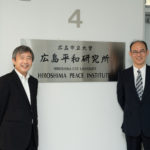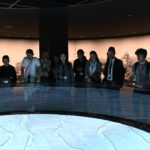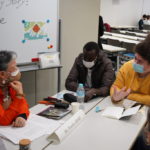Hiroshima and Carp, who has shared history

(Collection of Chugoku Shimbun)
The road to the reconstruction of Hiroshima also can be described as a history of the people who walked together with the baseball team Carp.
The first atomic bomb in human history destroyed the city of Hiroshima. It was said that no plants could grow for 75 years. However, three days after the atomic bombing, a streetcar ran and the local newspaper Chugoku Shinbun started to publish; the people of Hiroshima started to move.
The name of a professional baseball team “Carp” from Hiroshima appeared in the Chugoku Shinbun on September 28, 1949. It was only four years and a month after the atomic bombing.
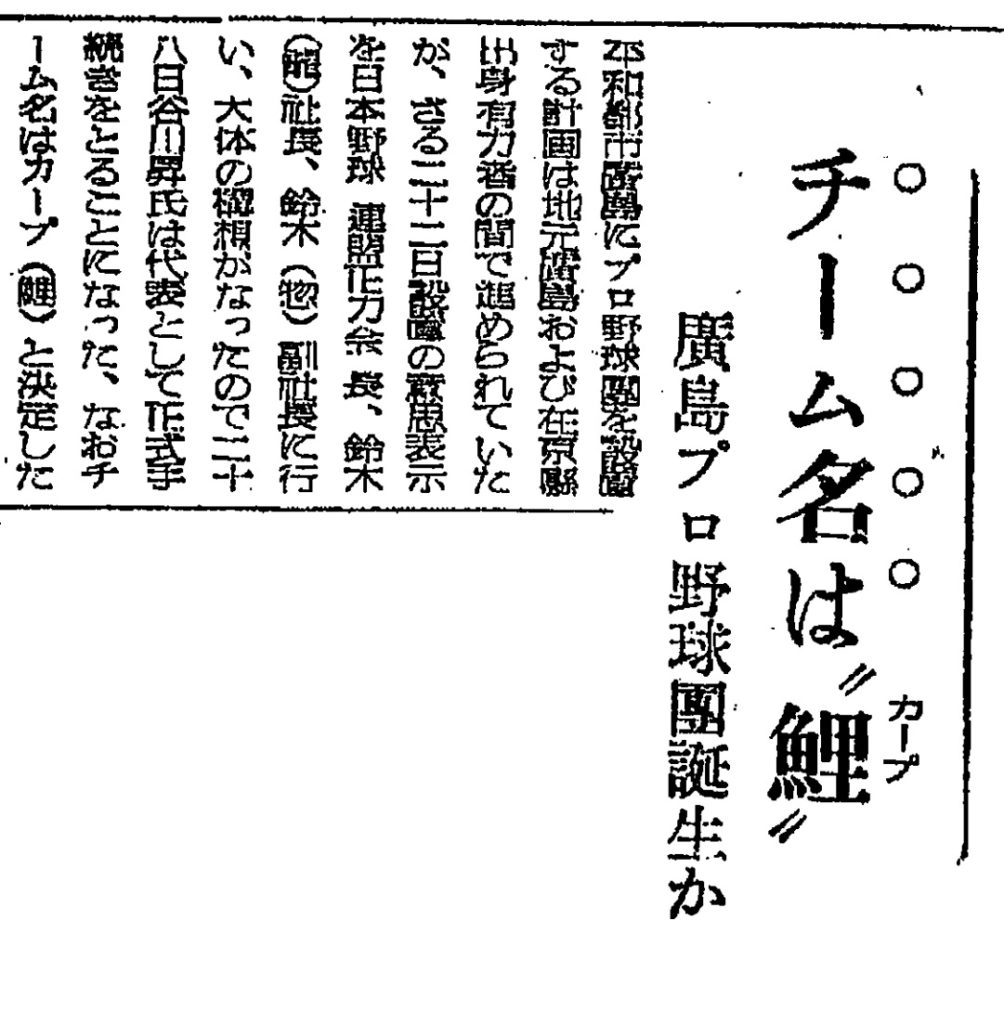
The Chugoku Shimbun morning edition on September 28, 1949
In that year, a two-league system was proposed for professional baseball, and there was an effort to establish a professional baseball team in Hiroshima, but there was no company in Hiroshima Prefecture to support a professional baseball team. Hiroshima was in the process of recovering from the atomic bombing. Therefore, the government of Hiroshima Prefecture, Hiroshima city, Kure city, Fukuyama city, Onomichi city, and Mihara city invested in the team, and under Noboru Tanigawa, the chairman of the preparatory committee for the founding of the team, the team Carp was born.
This was truly hope for the people who were recovering from the wreckage. The people of Hiroshima were moved by the Carp’s battles as if they were their own, and they continued to support the Carp from the bottom of their hearts.
Despite a lack of funds, the players, recruited through the personal connections of the first Carp manager Shuichi Ishimoto, managed to play their first season in 1950. However, they were 59 games behind the leaders and finished in last place. At the time, funds were short and the team had a cumulative deficit of 6 million yen (currency at the time).
Carp can’t make it–
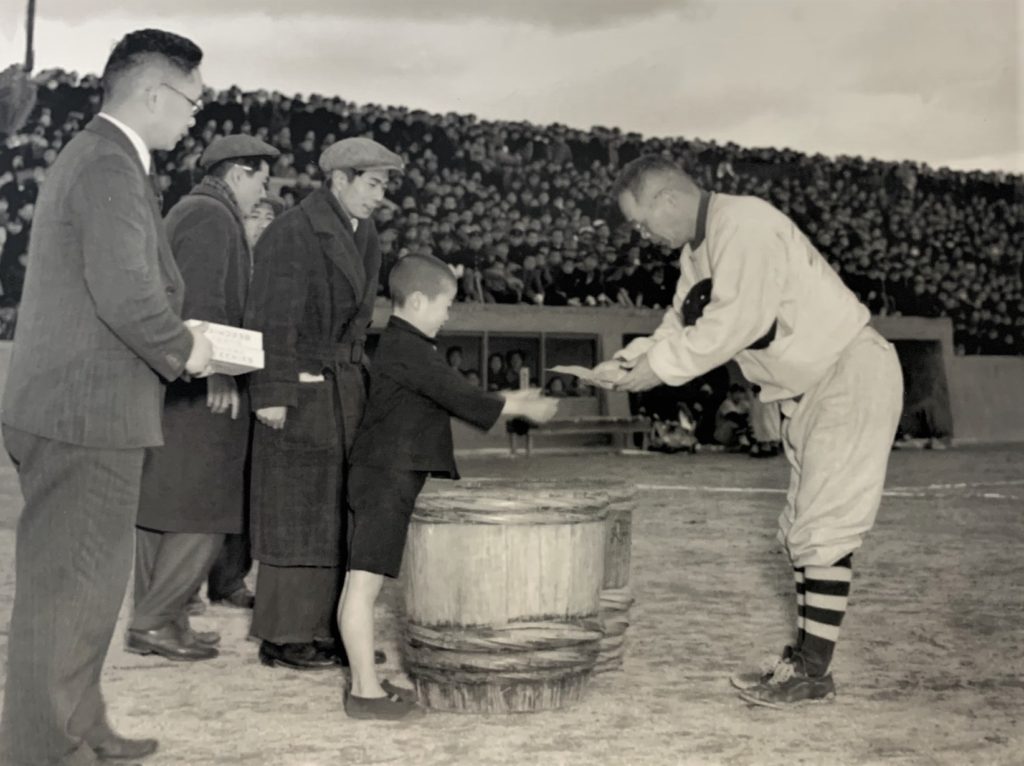
The funds raised by the so-called “barrel donation” were handed over to the Carp team (Collection of Chugoku Shimbun)
On March 14, 1951, Carp began discussing a merger with team Taiyo. NHK Radio reported, “Carp merges with Taiyo.” After the broadcast, Director Ishimoto was called to the meeting and insisted on the formation of the support group. From that day on, he worked to ensure the survival of the team with donations from fans.
On March 20, Director Ishimoto gave an impassioned speech in front of the Hiroshima Prefectural Office (Current Hiroshima University Hospital). “If the Carp is removed from Hiroshima, there will never be a local baseball team again.” he said, calling for financial support to keep the Carp alive. Immediately, 4300 yen was raised from the secretarial section and accounting section of the prefectural government. On the day of the games, a large sake barrel was placed at the entrance of the Hiroshima general playground, and the citizens of the prefecture and the citizens put money in.
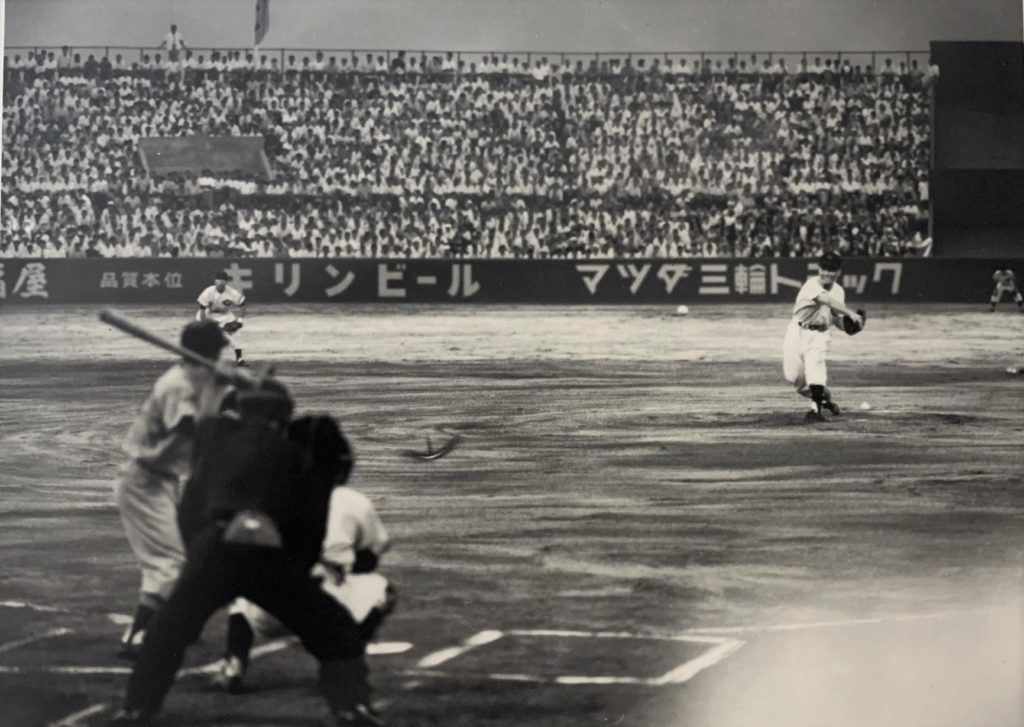
1957: The former Hiroshima Municipal Baseball Stadium with facilities for night games was completed in front of the Atomic Bomb Dome. It was the first night game against team Hanshin. HASEGAWA Ryohei, pitcher, hits first pitch (Collection of Chugoku Shimbun)
It was in 1975, 26 years after the team was founded that the sparkle shone on the ever-entrenched Carp. The Carp was led by Joe Roots, the first foreign manager in Japanese professional baseball history, and the players were encouraged to “Red is fighting color.” with red helmets. KOBA Takenori, who took over the command from the team’s roots, brought the players including YAMAMOTO Koji and KINUGASA Sachio together. He was tossed in blanket at Korakuen Stadium on October 15 of the same year: This is the moment when Carp won the championship for the first time. The proof of Hiroshima’s hope for recovery from the atomic bombing has reached its peak.
About 300,000 people rushed to the victory parade on Hiroshima Heiwa Street. On the route filled with joy, there was a picture of a family member. The players were inspired by the spirit of their predecessors, who worked hard to restore the Carp.
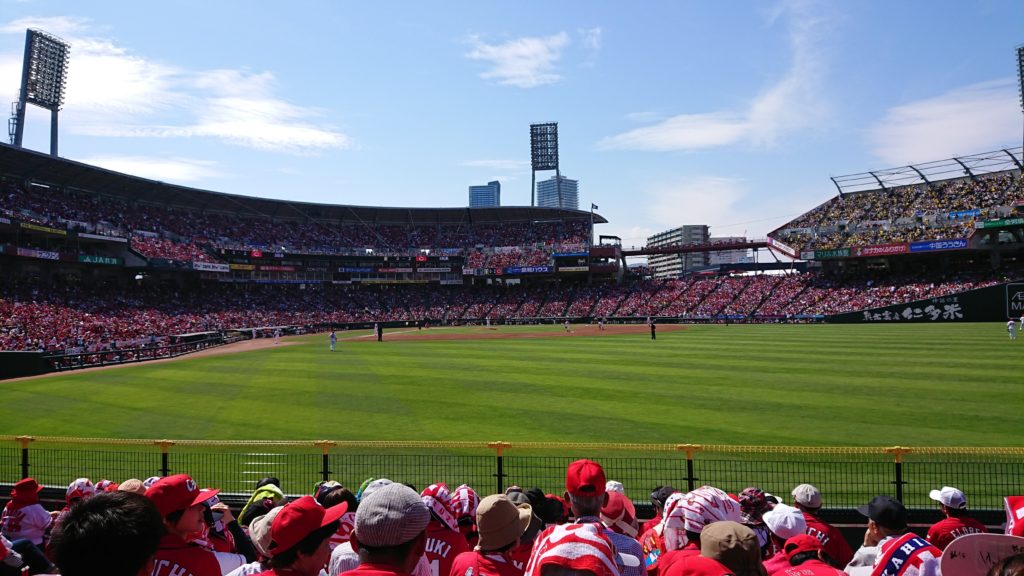
Even now, 70 years after the team was established, ardent support from Carp fans is delivered to the players of each game. (took on May 2019)
After the WWII, the people of Hiroshima kept cheering the Carp. The Hiroshima Carp never wavered from sending a message of peace through baseball. Even today, the home game that takes place on the day close to August 6, the day when the atomic bomb was dropped, is called the “Peace Night” game. The players and fans observe a silent prayer together, mourn the victims of the atomic bomb, and express their joy and gratitude by enjoying baseball (It will be held on August 7 against Hanshin in 2020). COOP Hiroshima, one of the organizations hosting the game, commented, “We have been holding since 2008 in the hope that children, who will lead the next generation, will feel the preciousness of peace through a professional sport in Hiroshima calling for the abolition of nuclear weapons.”
It has been 70 years since we walked together with Hiroshima. The existence of the Carp remains the hope of the people of Hiroshima. Even if the battlefield is moved from the former Hiroshima Municipal Stadium in front of the Atomic Bomb Dome to the Mazda Stadium, the cheers for the Carp will continue forever.
Mazda Zoom-Zoom Stadium Hiroshima (Hiroshima Municipal Stadium)
Residence: 2 -3 -1 Minami-Kaniya, Minami-ku, Hiroshima-shi
Electric: +81(0)82-568-2777 (Administrative Office)
Web:https://www.carp.co.jp/(Hiroshima Toyo Carp Official)
Tags associated with this article



